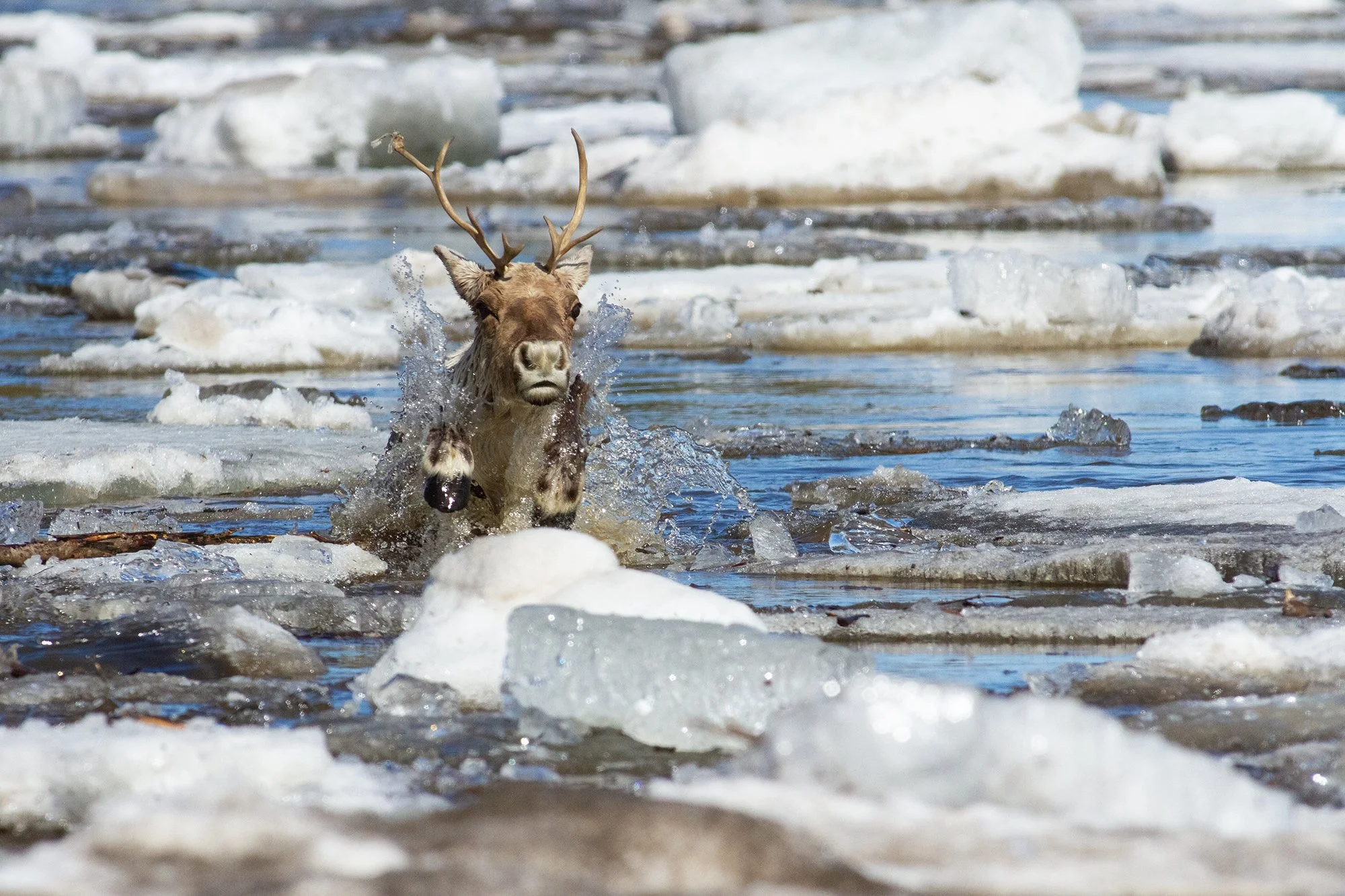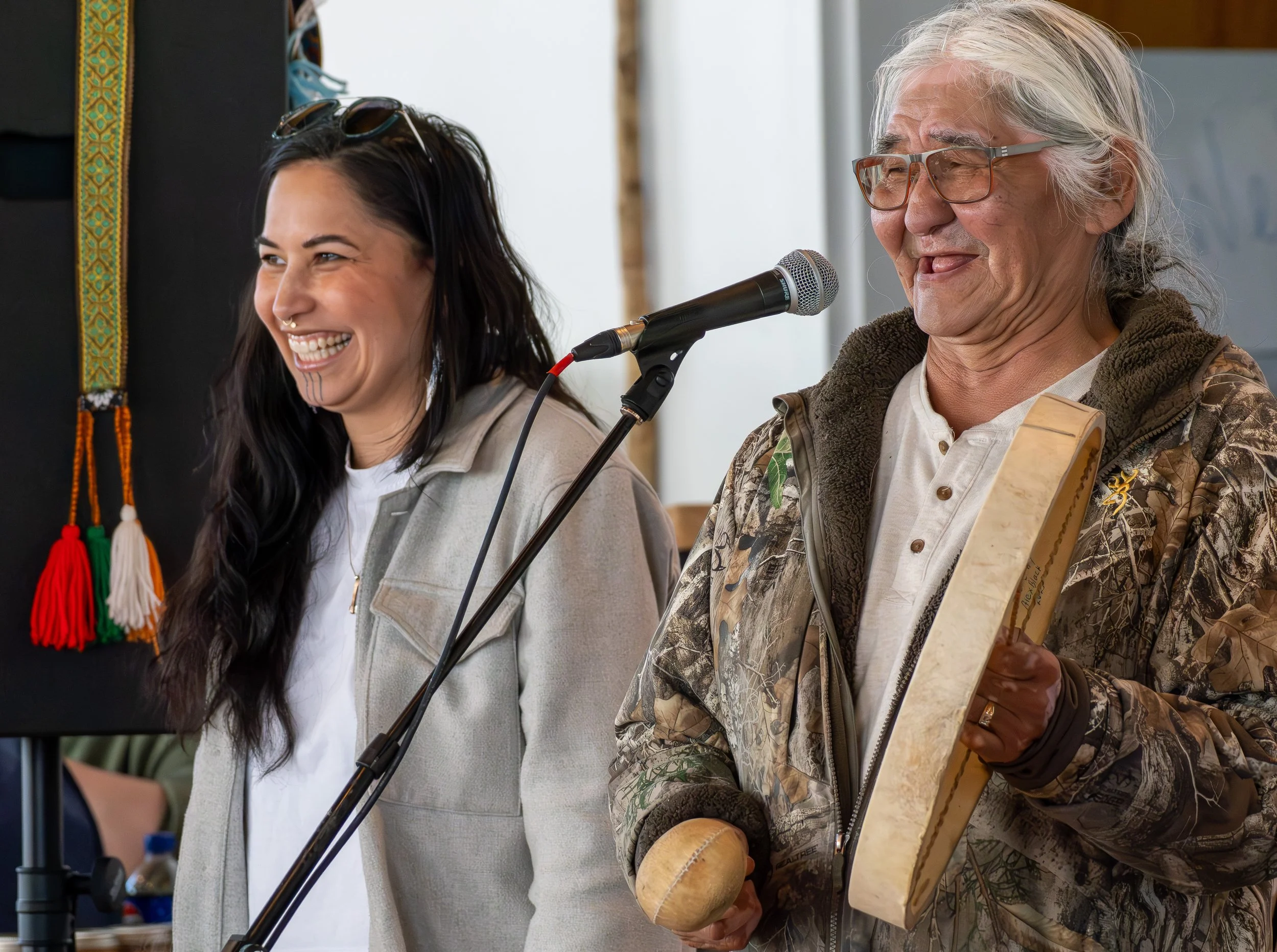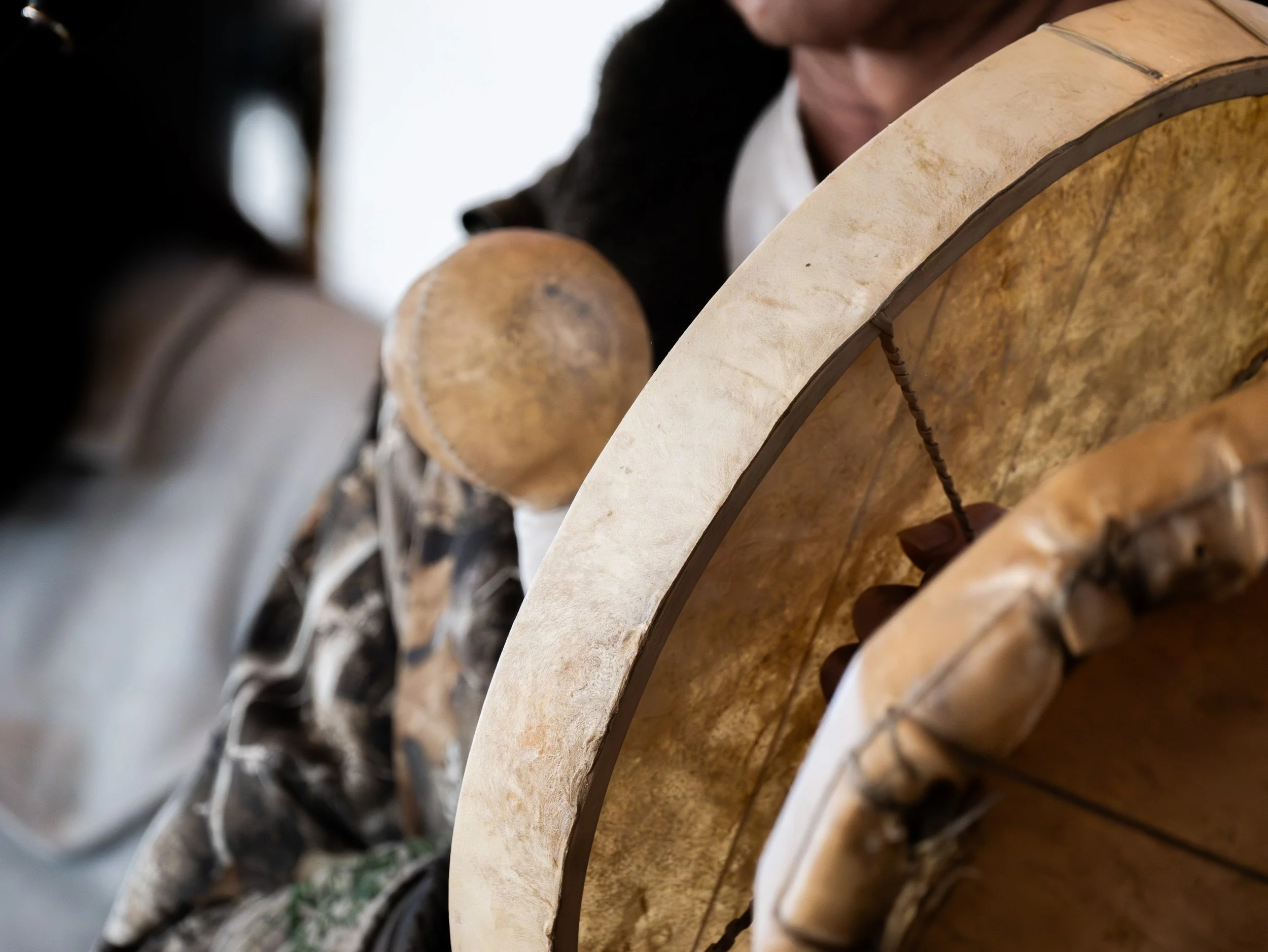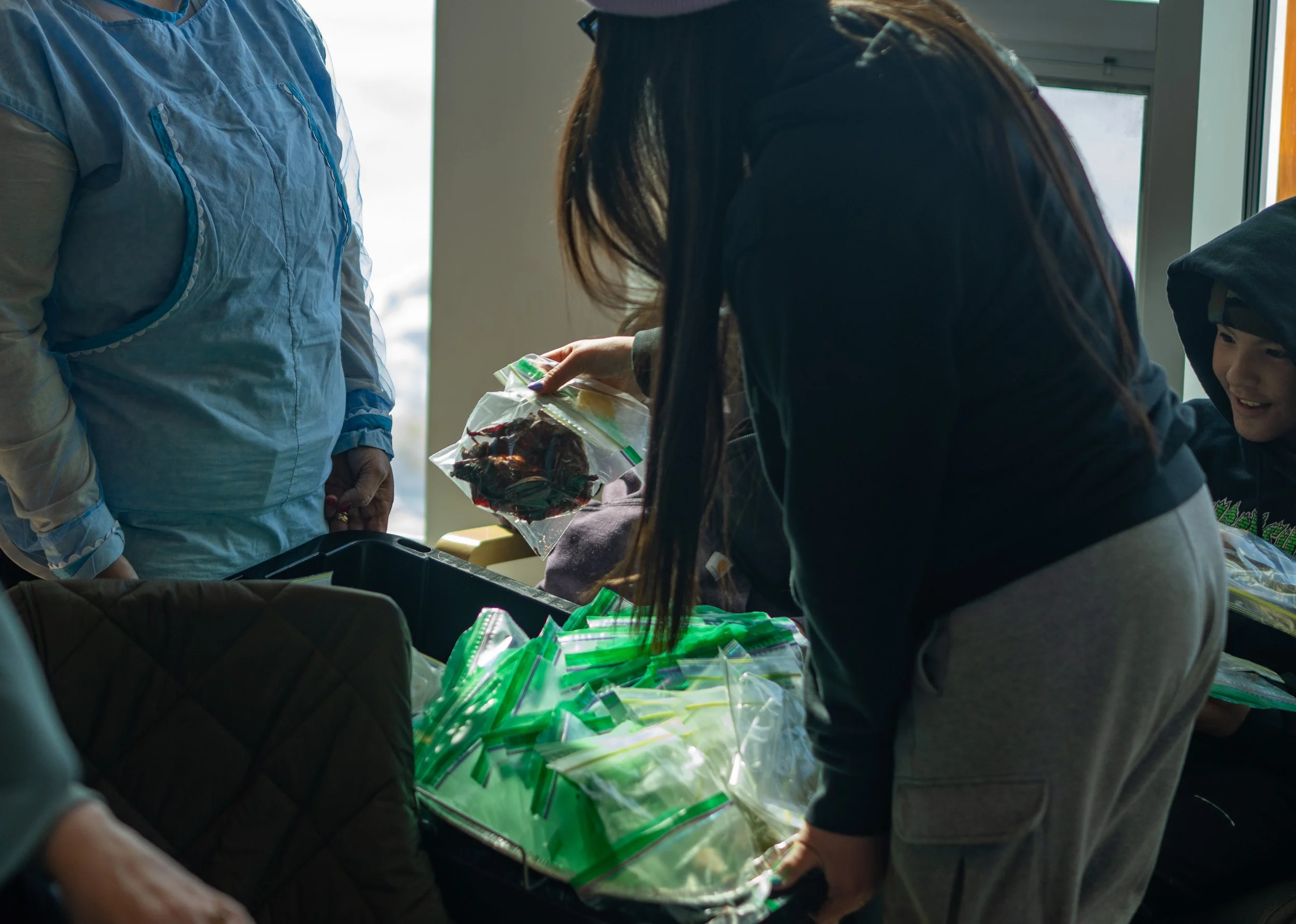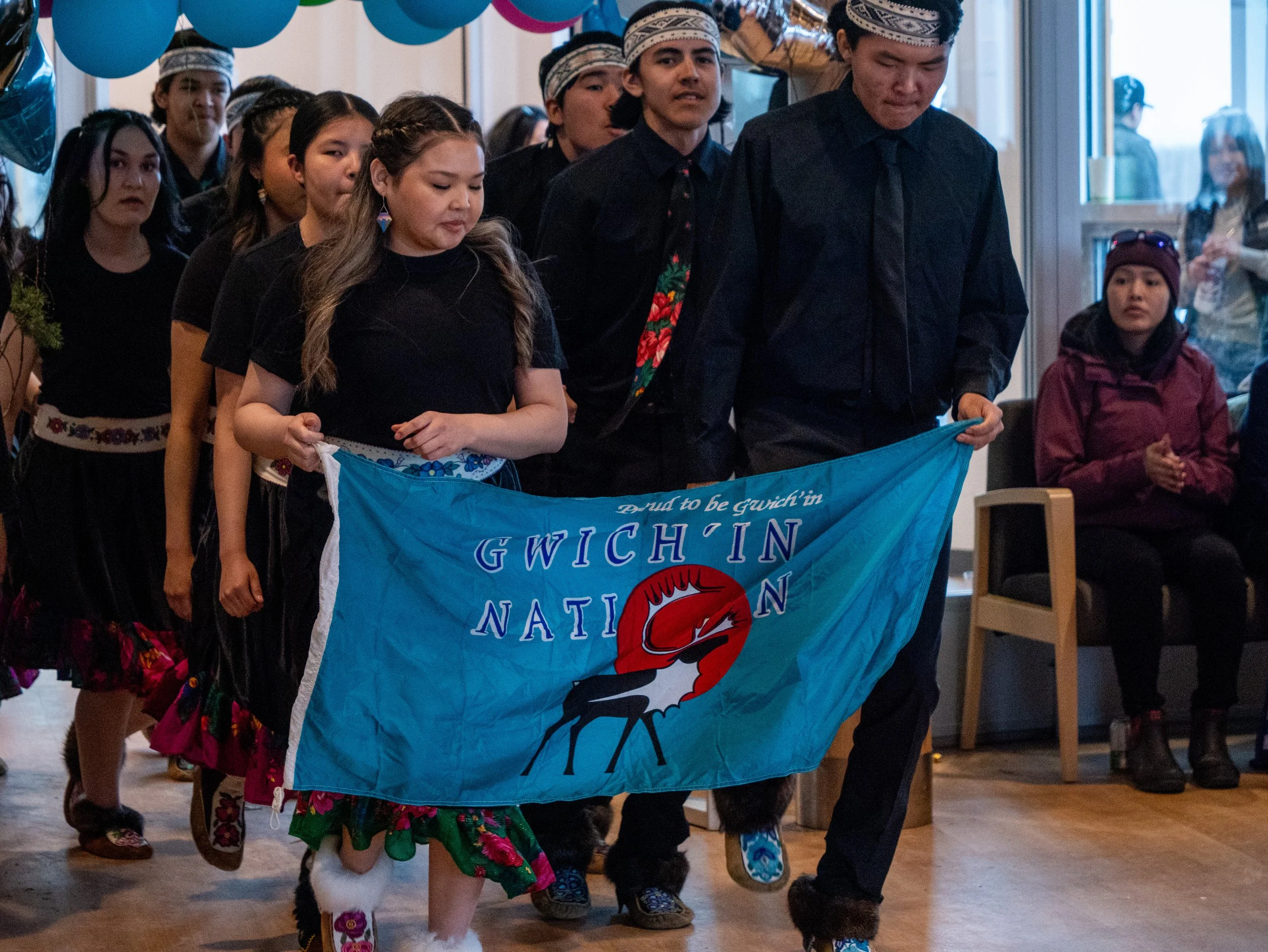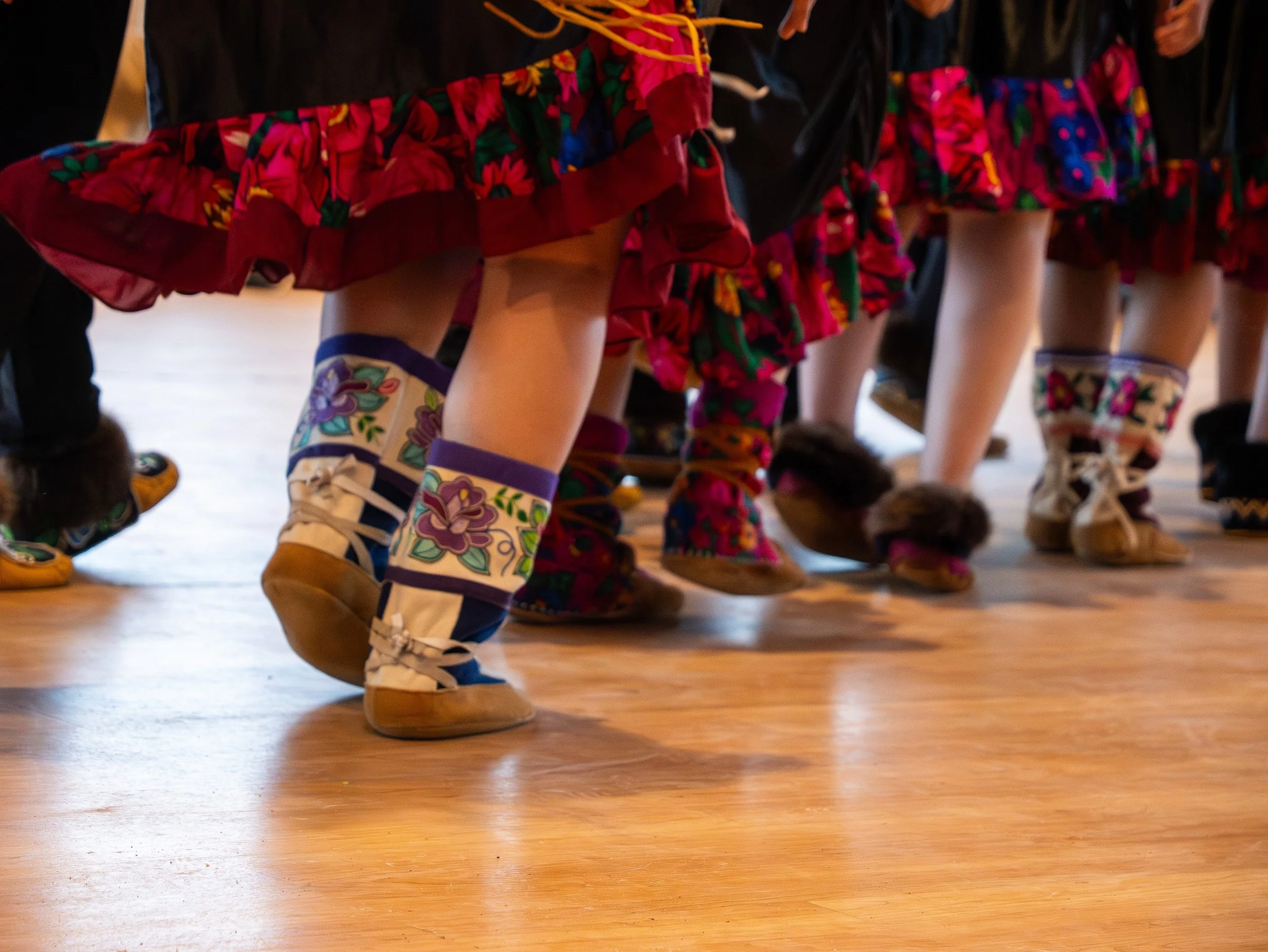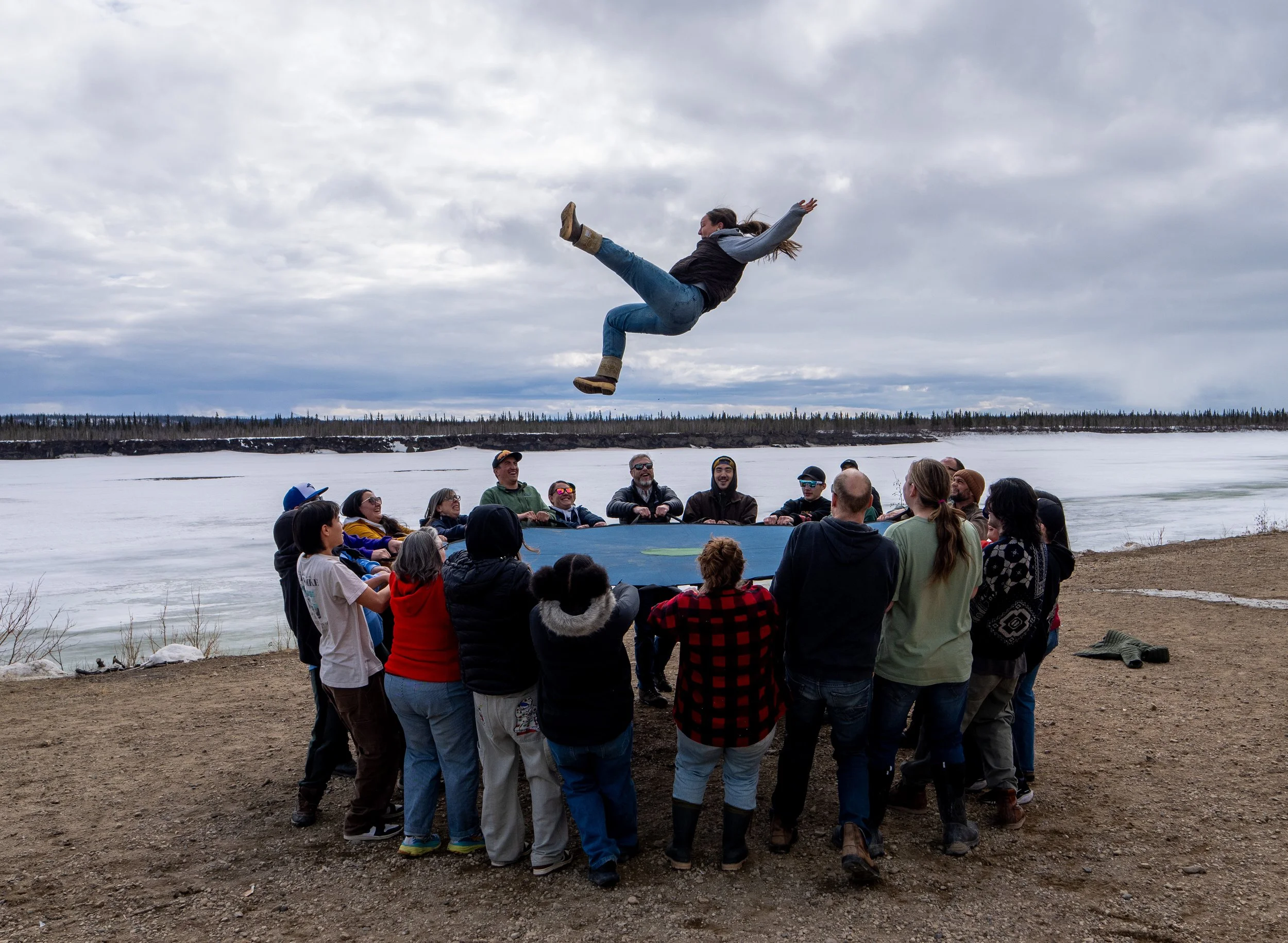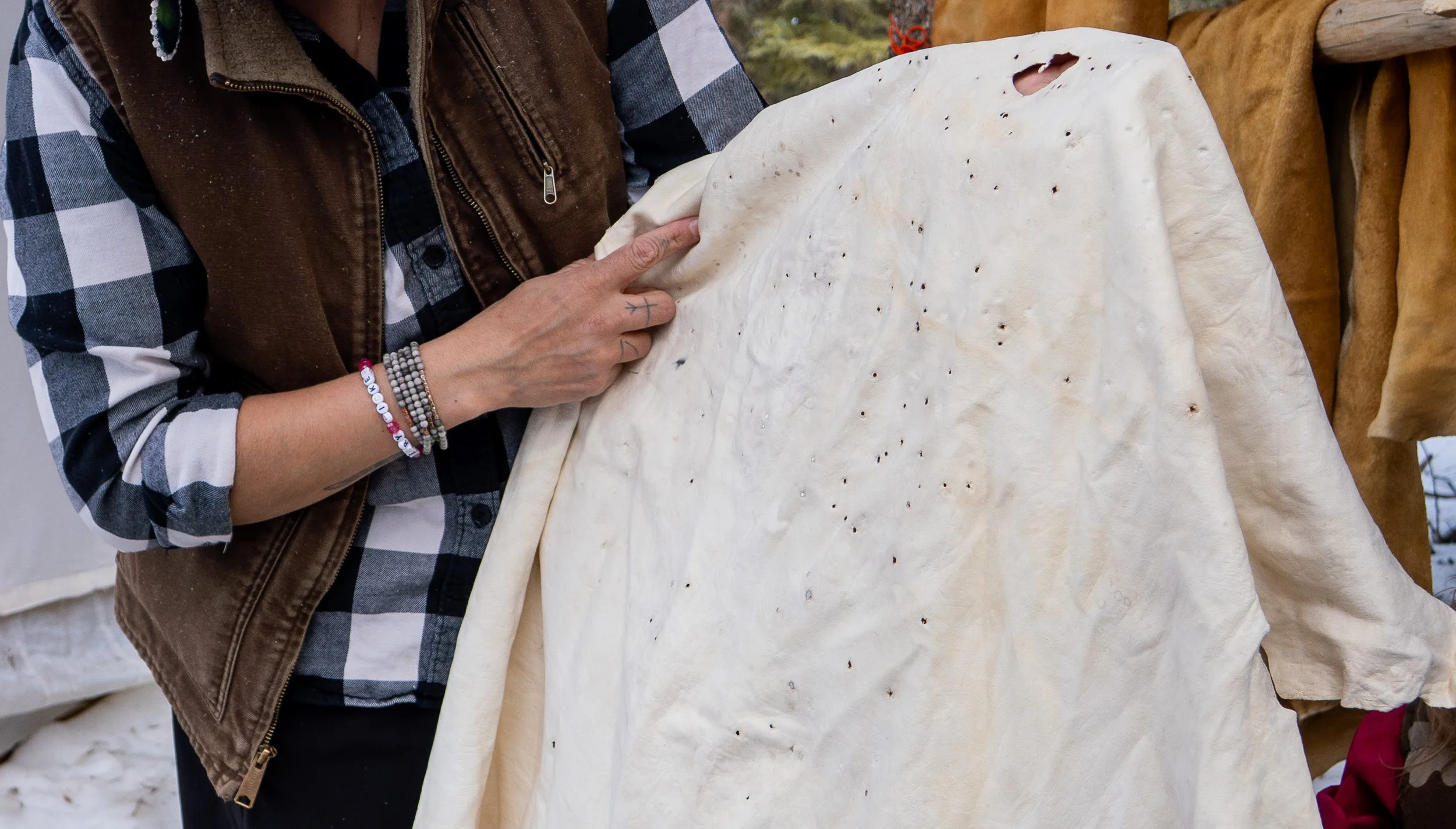“Born Into This Fight”
The Gwich’in’s Multi-Generational BATTLE to Protect the Porcupine Caribou herd From Oil and Gas Development
A caribou from the Porcupine caribou herd—one of the world’s largest barren ground caribou herds—swims across the Porcupine River, near Old Crow, Yukon, as the herd migrates to their summer calving grounds in Ivvavik National Park and the Arctic National Wildlife Refuge in Alaska. (Photo: Atsushi Sugimoto).
In May, my partner, Mike, and I flew north to the subarctic community of Old Crow, Yukon, home to the Vuntut Gwitch’in First Nation, to participate in Vadzaih Choo Drin, or “Big Caribou Days.” We were there on assignment for The Narwhal—myself as a writer and Mike as a photographer—to meet community members, learn about the sacred relationship between the Gwich’in people and the Porcupine caribou herd, and listen to stories from the past and present, particularly in light of the Trump administration’s promises to “drill, baby, drill.”
The first part of this in-depth story for The Narwhal was published on Monday, following Trump’s Big Beautiful Bill, passed in early July, which mandated an additional four oil and gas lease sales in the Porcupine caribou’s calving grounds in Alaska.
As a writer—and as someone who grew up reading dozens of articles and books about the decades-long ideological battle over oil and gas development in the Porcupine herd’s calving grounds—I wanted to centre the story on the relationship between the Gwich’in and the caribou. This is a connection that has existed for thousands of years.
As I would learn in Old Crow, vadzaih, or “caribou,” is embedded in every aspect of Gwich’in culture, language, and food security. Caribou is not a metaphor for the Gwich’in people; it’s a lived reality.
Vadzaih Choo Drin is an annual event that honours the seasonal return of the Porcupine caribou herd, one of the planet’s largest migratory barren-ground caribou herds. Each year, they migrate northwest toward their summer calving grounds in Ivvavik National Park on Yukon’s northern slope and the Arctic National Wildlife Refuge in Alaska.
While Ivvavik translates to “a place for giving birth, a nursery,” the Gwich’in have long referred to the Arctic Refuge as Iizhik Gwats’an Gwandaii Goodlit, “the sacred place where life begins.” Here, stories are told of the Gwich’in people trading half of their heart with the heart of the caribou.
The atmosphere in the Old Crow airport was festive: old friends embraced, voices reverberated with laughter and joy. Hundreds of people had flown in from communities across the North—Fort McPherson, Inuvik, Whitehorse, Dawson City, and Carcross. The local airline, Air North, had added flights to the remote community to accommodate the influx of visitors.
Our friend Paul greeted us, and we loaded our gear into a trailer attached to his ATV. Mike and I balanced behind Paul as we tripled on the ride into town, passing a hand-painted plywood sign that read: CULTURE FULL THROTTLE.
The Old Crow community centre pulsed with the energy of the young and the old, the scent of wild game wafting from the kitchen. We filled our mugs with steaming hot Labrador tea. Outside, the Porcupine River remained frozen—locals told us the spring break-up was two weeks late. In previous Caribou Days, there had been sightings of the herd crossing the river toward town; this year they were nowhere in sight—though everyone knew they were nearby.
Elder Randall Tetlichi led an opening prayer and song for vadzaih, inviting children to join him at the front of the room. “It’s our job to teach the children [about caribou],” he said. “That’s the first education. I know we can.”
Volunteers handed out bags of dried caribou meat and bone grease.
“I wanted the kids to have that taste of what our grandparents worked so hard for in Crow Flats,” said Teresa Frost, the head organizer of Caribou Days.
All the traditional foods—caribou, moose, muskrat, beaver, cranberries, and herbs—were locally harvested and prepared by community members and volunteers. They fed us breakfast, lunch, and dinner for three days straight. We ate caribou in many different ways: dried, boiled, roasted, fried, and ground. (My favourite: caribou tacos.)
As a visitor, I felt as though I could taste the connection between people and caribou in Old Crow.
That first evening, I went to bed—or tried to, given the 24-hour daylight—marvelling at this cultural relationship that has endured despite a century of colonization.
The people’s connection with caribou was ingrained; they didn’t have to think about it. They spoke it, danced it, sang it, told stories about it, and played it. It was normal for people to come together in the name of an animal. It was normal to dance for caribou. What if every community celebrated their non-human kin in this same way?
As I would also learn, though, if children are born into this millennia-old relationship, they also inherit the responsibility to rise and fight for its protection—and for their sovereignty.
At Caribou Days, we listened to Elders, community leaders, scientists, and rising young leaders speak about the health of the herd (hint: it’s declining due to cumulative pressures), the need to teach youth about ethical hunting practices, and the geopolitical threats the Gwich’in—and the caribou—are facing with President Trump at the helm of the U.S. administration.
“We’re in a time of uncertainty,” said Kris Statnyk, a Vuntut Gwitch’in member and Indigenous Rights lawyer who co-chairs the Gwich’in Council International and leads its Arctic Council delegation.
He pointed to Trump’s threats to turn Canada into the “51st state” and annex Greenland, both Arctic nations, for control over natural resources and strategic locations.
“We probably haven’t experienced this type of turmoil in the Arctic since 1867, when Russia claimed Alaska and then sold it to the United States,” said Statnyk. That, of course, created a colonial border between Gwich’in communities in Canada and the U.S., as well as for the Porcupine caribou herd that migrated freely across the landscape.
There was tension in the room as Statnyk spoke. Everyone was thinking about THE U.S. ADMINISTRATION’S next steps to promote oil and gas drilling in the caribou’s sacred calving grounds. The Gwich’in had faced this before, but not with a leader like Trump in the driver’s seat.
A month later, I spoke with Statnyk again over the phone.
“Seismic activity could be happening in [the refuge] within a year. That’s just the reality,” he told me. “We haven’t really come close to that before. We can try to slow down the regulatory process and dissuade companies and banks from supporting projects in that area, but it’s difficult to prevent this U.S. administration from green-lighting things they want.”
With Trump’s disregard for national and international law, his cuts to science, research, and national parks, and his deployment of the national guard at a moment’s notice, the forces stacked against the Gwich’in have never been greater.
After Caribou Days wrapped up, before flying back to Whitehorse, we visited Christine Creyke at her home in Old Crow. She showed us the beautiful moose and caribou hides she had spent hours, days, and months working on.
Creyke, a member of the Vuntut Gwitch’in First Nation and Tahltan First Nation, grew up between northern B.C. and Old Crow. Today, as Lands Manager with the Vuntut Gwitch’in, she has been appointed to represent her community on the Gwich’in Steering Committee, the most important political organizing body in the fight to protect the caribou’s calving grounds. Creyke feels a deep responsibility in her advocacy role, continuing the decades-long work of her family and community.
“We’re born into this fight,” she told me, handling a soft, smoked moose hide with great affection.
“I see these huge mega oil and gas projects as part of a way to fuel a world that is so far removed from ours. There’s so much energy consumption in the world. I’m up here hauling all my water to soak my hides. We don’t need all of this gas. What I need is for my hides to be soft, my caribou herds to be healthy, and my freezer to be full.”
She pointed to the startling declines of other barren-ground caribou herds in Canada, including the Bathurst herd in the Northwest Territories, which plummeted from 470,000 in the mid-1980s to just over 6,000 today. There is no harvest of the Bathurst herd allowed in the Northwest Territories, while a limited hunt is permitted in Nunavut.
“I can’t imagine what that means for people who relied on their herd for everything—food, clothing, culture, and way of being,” Creyke said. “When I think about my kids and them wanting to work on hides in the future… I have to do this advocacy work now.
Read the full article in The Narwhal—and stay tuned for the second part of this story, out next month.
Special thanks to the community of Old Crow, Yukon, for hosting us at Caribou Days in late May—and to the editorial and design team at The Narwhal for supporting the telling of this story.
Enjoy reading this article? Please consider making a monthly donation of $5—the equivalent of “buying me a coffee”—to support my writing and community journalism work. Thank you for your continued readership and support!
